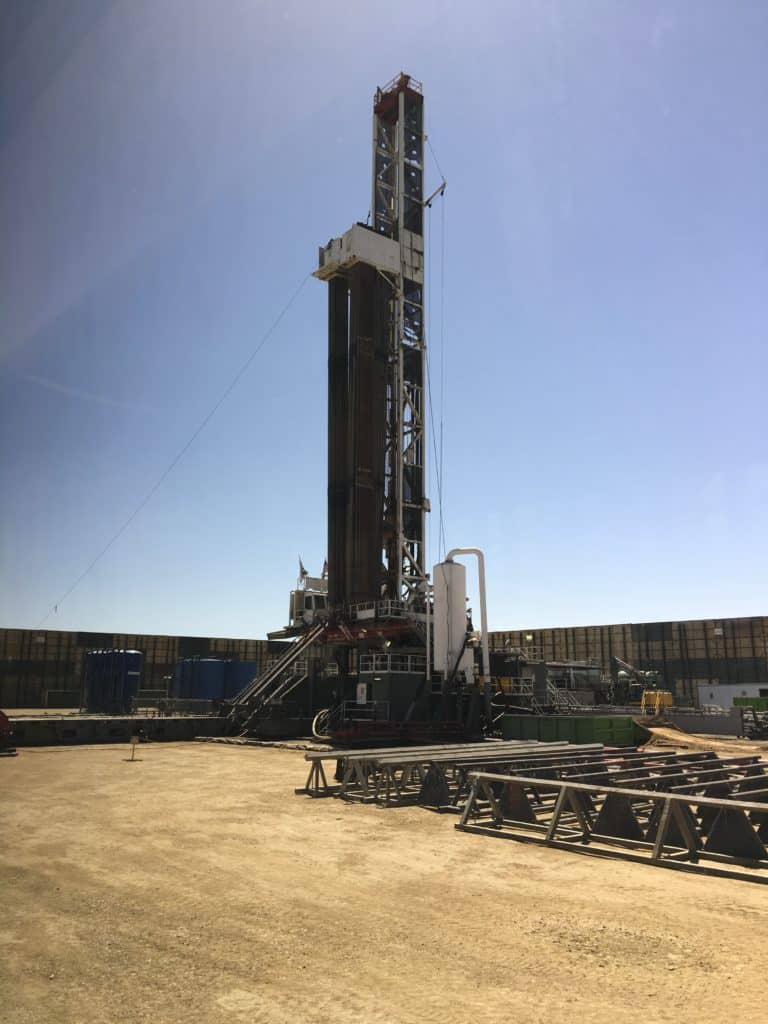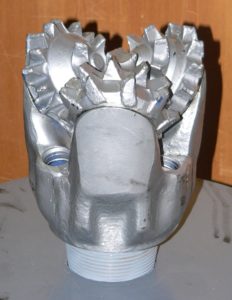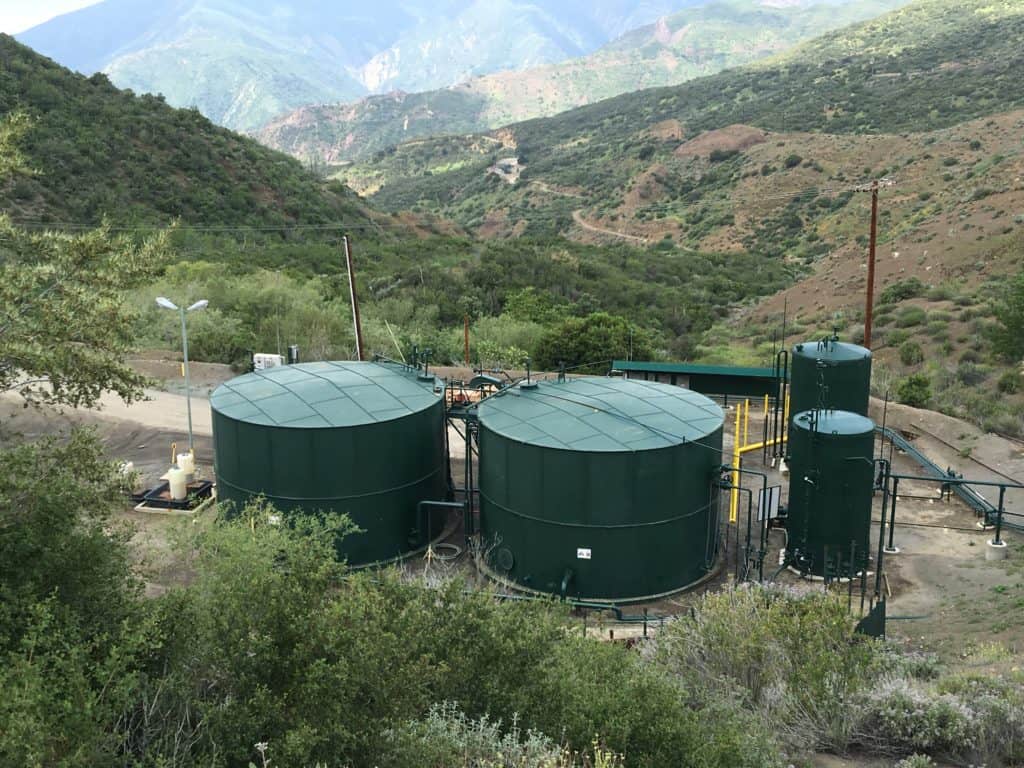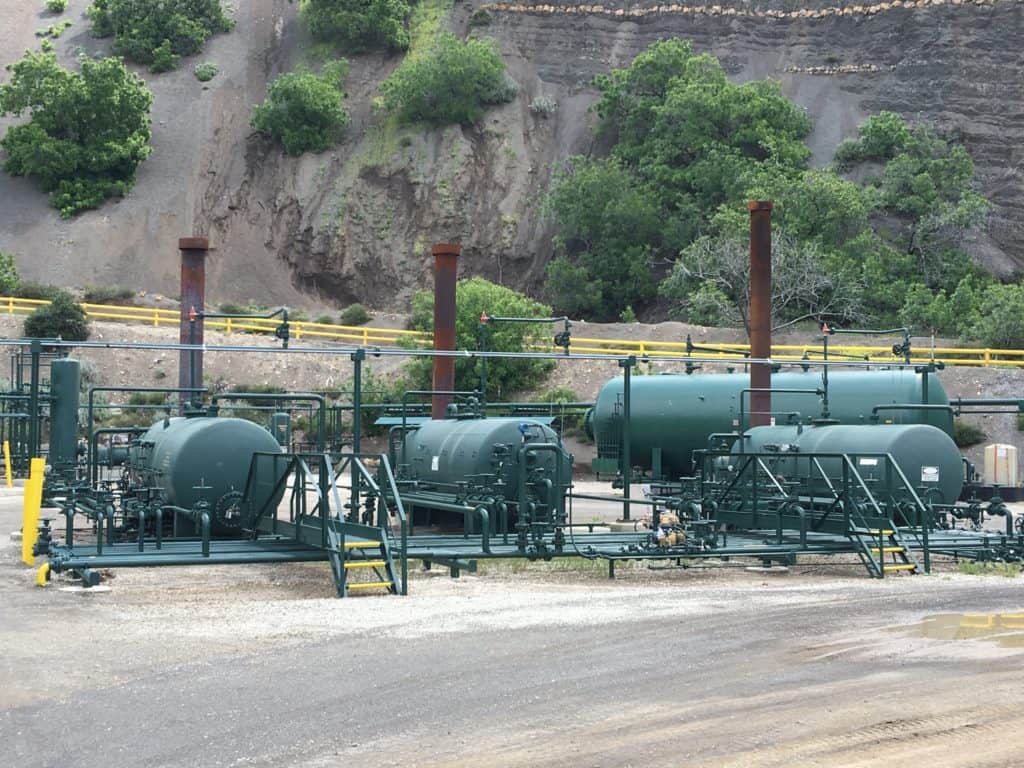
Once geologic, engineering and financial analysis is done to ensure the desired area will yield a successful drilling project, it is time for final preparations and construction of the oil and gas well. What we desire is a well that can be safely constructed and then safely used.
Most of the problems in building a safe well are in:
- containing pore pressure and reservoir fluids,
- preventing well bore collapse, and
- controlling flow when we wish to produce the well.
Were it not for these issues, wells would be easy to drill and use. Let’s look at how a well is constructed to avoid these problems and to secure the safety of operations, workers, and the environment.
Constructing a safe well includes eight important stages that must be completed under regulatory enforcement to ensure the well is in compliance with all environmental, health, and safety standards. These steps for construction of an oil and gas well are outlined below.
Step One: Design and Planning Phase
The first step includes the final business and engineering decisions. Many of these decisions revolve around design and procuring the needed equipment and materials to construct a safe and efficient oil and gas well. An example decision might involve materials related to completion techniques: What techniques will be used after drilling is finished to bring oil and gas to the surface of the wellbore and what materials would be needed?
Step Two: Drilling

Drilling a well represents the rotation of a bit (example shown at right) under pressure in the ground to create a hole. If you have ever work in a machine shop, the process works somewhat like a drill press. Applied pressure and rotation of a sharp tipped drill bit cuts a hole in a piece of metal. For an oil and gas well, the bit diameter determines the wellbore or drill hole size. Thick metal pipes called drill collars are screwed directly onto the drill bit. These drill collars provide the initial weight that will push the drill bit against the bottom of the hole. The drill collars often include stabilizers, which make sure the lower drill string (=string of connected pipe) and bit remain centered in the hole. The drill bit, drill collars, and stabilizers comprise the bottom hole assembly, which is attached to sections of drill pipe that stretch back up to connect to the drill rig so that the bit can be rotated.
As the hole gets deeper, the weight of the overlying drill string begins to increase beyond the point to allow for effective drilling. To keep the weight at the optimal level, drillers use the rig and its machinery to take some of the weight off. Instead of the entire weight of the drill string resting on the bit itself, most of the weight is held up by the derrick and its hoisting system. When drilling commences, the first piece of the drill string pipe needs to be attached to the bottom hole assembly. As drilling continues, lengths of pipe are screwed together to extend the length of the hole. The process is repeated many times—hundreds of 30-foot drill string segments are required to complete a well several thousand feet deep.
Drilling mud is pumped downhole through the inside of the drill pipe, is jetted out of the bit through nozzles, which aids in the rock cutting process. The mud is then circulated back to the surface through the wellbore annulus (the space between the smaller diameter drill pipe and the larger diameter drill hole in the rock created by the bit). The drill cuttings from the bottom of the hole are transported to the surface by this mud circulation flow. The mud is filtered to remove the solids, which are later disposed of, and the mud is then pumped back downhole through the drillpipe.
Step Three: Casing and Cementing
Once a segment of wellbore is drilled, steel casing is run in the hole and is cemented in-place to control how the well interacts with underground rock formations and the fluids they contain, and to prevent wellbore fluids from contaminating underground sources of drinking water. Casing is steel pipe that provides the outer body of the well and makes up its primary structural component. Typically, multiple sections of connected casing are needed to complete a well.
Step Four: Testing for Well Integrity
Good engineering design focuses on well integrity. An engineer wants to minimize the risk of the release of fluids from wellbore into the surrounding rock, or the reverse, throughout the life cycle of the well. Engineers confirm that the proper cementing is in place through the use of several tests that check the integrity of the cased wellbore. Some tests look at the pressure in the well to see if the well is properly isolated from the surrounding rock. Other tests involve running a sonic tool down the borehole (lowered on a wireline) to detect the bond of the cement to the casing and surrounding rock. These tests must be sufficiently met prior to going on to further steps in the well construction process. Failure of any of these tests may suggest that well integrity has been compromised and should be taken very seriously by all involved in the project.
Step Five: Well Stimulation
Well Stimulation includes the opening of pathways in the surrounding rock to ensure oil and gas can properly flow to the wellbore, allowing for hydrocarbon extraction at the surface. After a well passes its integrity testing, it is time to establish communication between the inside of the last string of casing (the production casing) and the formation from or to which fluids will be extracted or injected. Perforation operations typically involve shape charges being lowered into the well on a wireline to a precise depth. The charge is then detonated, sending a hot jet of plasma radially from inside the wellbore, cutting a small diameter hole (<1 inch) through the steel casing and the cement sheath and as much as 10 inches into the rock formation.
Stimulation also allows operators to repair damage to rocks near the wellbore region as a result of drilling (drilling mud can plug the rocks adjacent to the well) or other operational procedure. Although this step is not always needed, stimulation is fairly common to ensure the most efficient operation of a well.
Early Well Stimulation Techniques
Historically, explosives were used in the early days of oil and gas production as a method of stimulation. Watch the video BOOM! where Rick Tallini shares the Oil Well Torpedo story and explains the origin of using torpedos, an explosive device, to fracture the rock surrounding an oil well to increase flow in the early days of the petroleum industry. Fortunately, engineers have developed much better modern tools for stimulation!
Step Six: Wellbore Cleanup
This step includes cleanup once cementing and stimulation have been completed. The wellbore must be cleaned out prior to going on to the next steps that involve new equipment entering the wellbore.
Step Seven: Production Tubing and Completion Equipment
Production Tubing
Once we have a clean wellbore with good integrity, necessary equipment for long term flow operations is installed within the borehole, including various types of production tubing that control the flow to the surface of hydrocarbons that enter the wellbore. By inserting tubing (1⅞” – 2⅞” diameter) into the casing (4½” – 5½” diameter), engineers narrow the diameter of the pathway for oil and gas to the surface, which helps maintain a critical velocity that can ‘lift’ the fluids to the surface. Fluids flowing through the production tubing are often corrosive. Thus, rather than basic carbon steel composition, tubing may be composed of corrosion resistant alloys containing various quantities of Ni, Mo, Cr, Cu, and other elements for corrosion resistance.
Perforations
Perforations (holes) must be created in the production casing to create communication between the reservoir and the well, allowing production of hydrocarbons.
Packers
Zonal isolation is often required in a wellbore, sealing the annulus from the fluids flowing up the production tubing or to selectively produce from a well that has multiple completion zones (zones where the casing is perforated and has flow communication with the formation). The most common and versatile piece of completions equipment for isolation is the production packer (orange in figure), which is used to provide a seal and isolate various zones within the well.
Step Eight: Final Wellhead and Production Equipment
Final equipment is installed to allow for the wellbore to commence production. Equipment at the surface is included in this step, as it must follow equipment installation within the wellbore. Production equipment at the surface may include items such as tanks, compressors or pumps. Once this step is complete, the wellbore is ready for operation. Based on the success of the well, the project may be expanded to include multiple wells that constitute an oil or gas field, as shown below.



Image Credits
- IMG_6668-drilling-in-progress-sound-barriers: Hilary Olson
- Tete-de-foreuse-p1010272: Rama, Wikimedia
- shutterstock_625565144-edit3: BalLi8Tic/Shutterstock.com
- IMG_2180-Produced-Water-Tanks-Sespe-Field-CA: Hilary Olson
- IMG_2201-Heaters-Sespe-Field-CA: Hilary Olson
- IMG_2495-Sespe-Field-CA: Hilary Olson